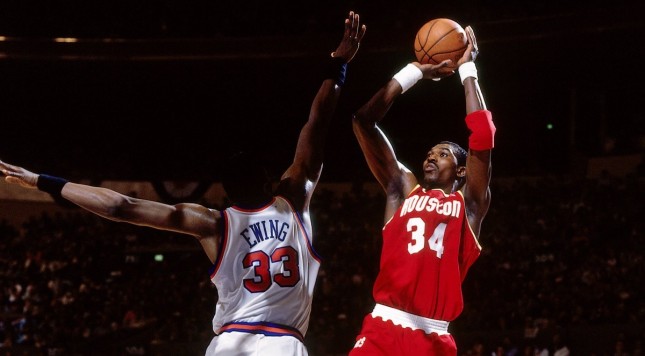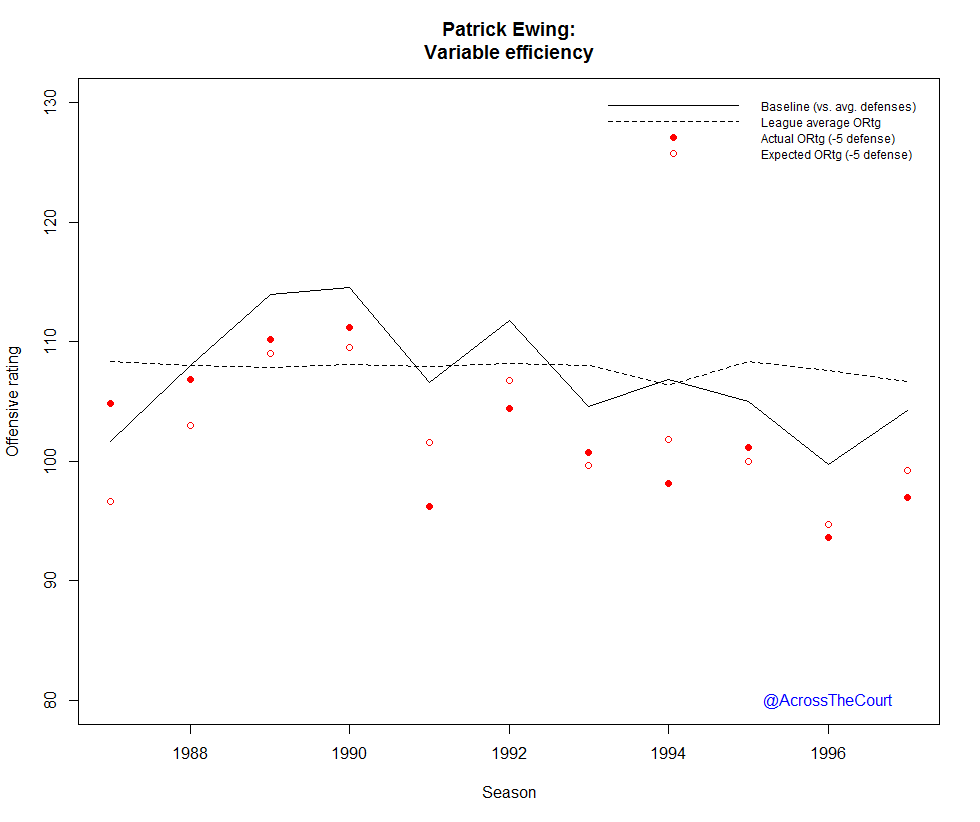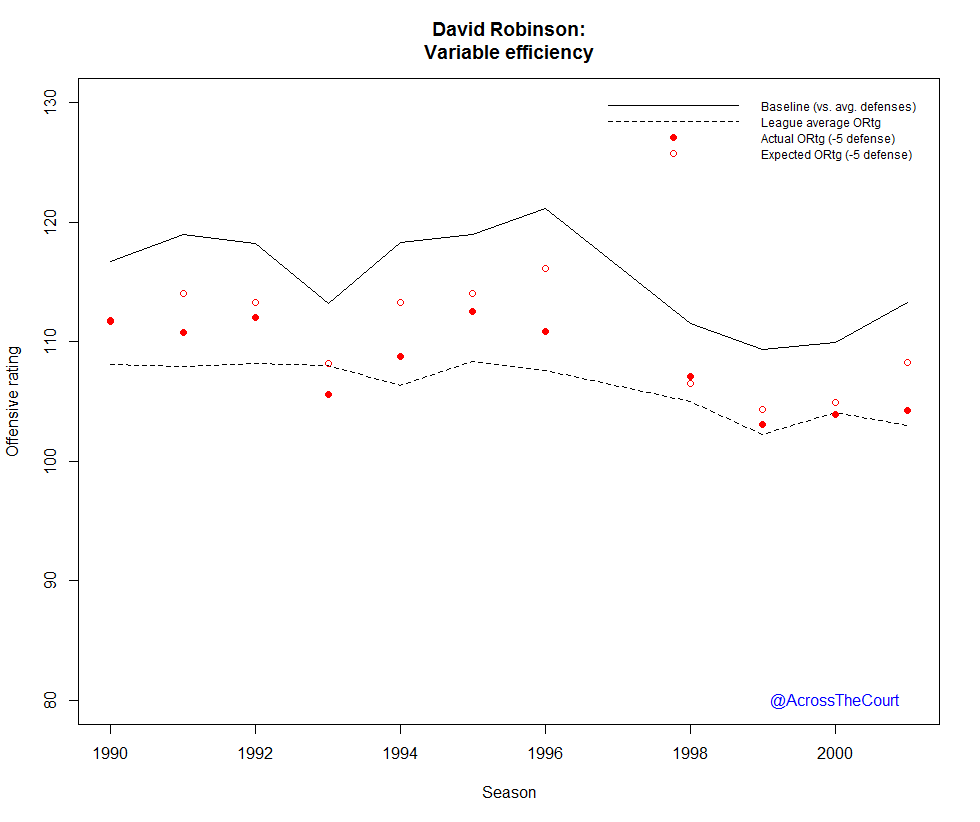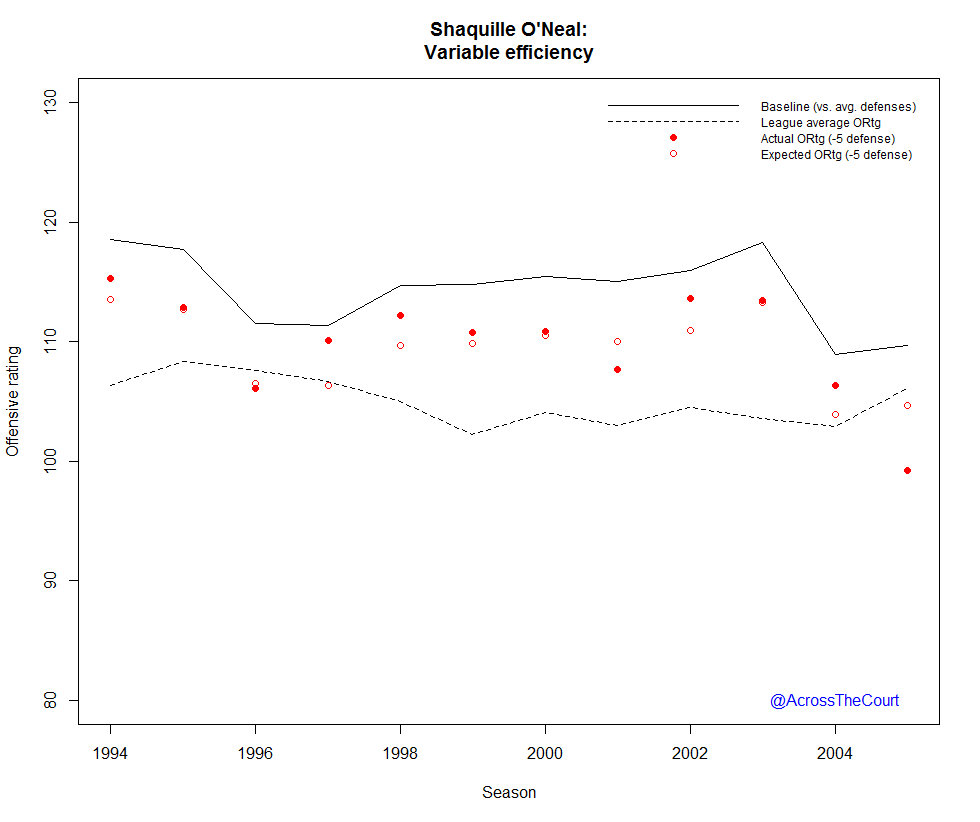When people cite how players do against the top teams or top defense, they typically use a box score summary of their stats versus teams rated X or above. This is not an accurate method, however, as a player can go against several defenses barely over the threshold and another can go up against two of the best modern defenses ever in a row in the playoffs. This actually happened in 2011 when the Miami Heat faced the Chicago Bulls and then the Boston Celtics.
What’s more impressive: 21 points versus the -3.0 (three points below the league average for points allowed per 100 possessions) 2011 Lakers and the -4.8 rated Scott Skiles-Bogut Milwaukee Bucks, or 20 points versus the -7.0 Noah-Deng-Thibs Bulls and the -7.0 Garnett-Pierce Celtics? Obviously, the 20 points is more impressive, but if you use -3 as a threshold for a player’s averages versus elite defenses the finer details of the Chicago and Boston defenses will be lost.
Thus, I created a stat that can calculate the marginal changes of any specific stat relative to the competition. What this means is that you can quantify how a player does against better teams.
When people hear about players who flop against better competition and others who rise to the occasion, two players who come to mind are Olajuwon and David Robinson. The Admiral put up some of the most incredible regular seasons numbers ever, but fell short in the playoffs. When he was awarded the MVP in 1995 during a playoff game, he was facing Olajuwon in the series. Olajuwon responded with a 42 point, 9 rebound, 8 assist, 5 block beatdown in a win; Robinson was limited to 22 points. The Rockets won the series and then the title. Robinson was forever branded a playoff failure who shrinks against higher competition.
Adding in Ewing, another guy known for choking, and Shaquille O’Neal, someone known for being there “when it counts,” there’s a set of four guys to analyze at the same position in roughly the same time span. I’ve included the playoffs and multiple seasons when the players were at their best, excluding rookie seasons in most cases and their twilight years.
At the first level of analysis, people focus on points scored. But something’s lost: you don’t know if a player is scoring less because he’s shooting less or his efficiency is dwindling. Looking at how usage rate changes when the defense gets better, the differences are small. Ewing and Olajuwon take more shots, but by a small amount. Shaq and Robinson take less shots against better defenses, but it’s by a tiny, insignificant amount. As a general rules, it appears these top players take the same burden in the offense as the defenses change, and this makes sense: no matter how good the opposing defense is, someone still needs to use the possession.
Efficiency, however, is where it gets interesting. I’ve provided the coefficients from the regression analysis below. Note that a coefficient of exactly 1 is the expected change; it would be a one-to-one change in offensive efficiency compared to defensive efficiency. Anything less than one and you’re doing better than expected as defenses improve. Olajuwon, known for his expertise against the elite competition, looks average here. Shaq’s a little above average, but not by much. David Robinson, however, is an outlier: a coefficient of 1.41 is extreme and it’s highly statistically significant. Since his usage rate isn’t growing, he’s offering a lot less as defenses get better.
V-stat: Variable efficiency
Hakeem Olajuwon:
0.98
Patrick Ewing:
1.20
David Robinson:
1.41
Shaquille O’Neal:
0.90
Breaking it down year-by-year, there appears to be a lot of randomness, but a few things are apparent. Olajuwon was a lot better during the mid-90’s when he earned the reputation of giant killer. Ewing would look a lot better save for a couple seasons, while Shaq only has one highly negative season: 2005. David Robinson, despite the large decreases, is still efficient, even more efficient than Olajuwon versus a -5 rated defense.
(For perspective, the actual performance against a -5 defense, which is one where the team allows 5 points per 100 possessions below the league average, is plotted with the expected performance level. The expected level is five points below the baseline, while the actual level is based on the variable coefficient.)
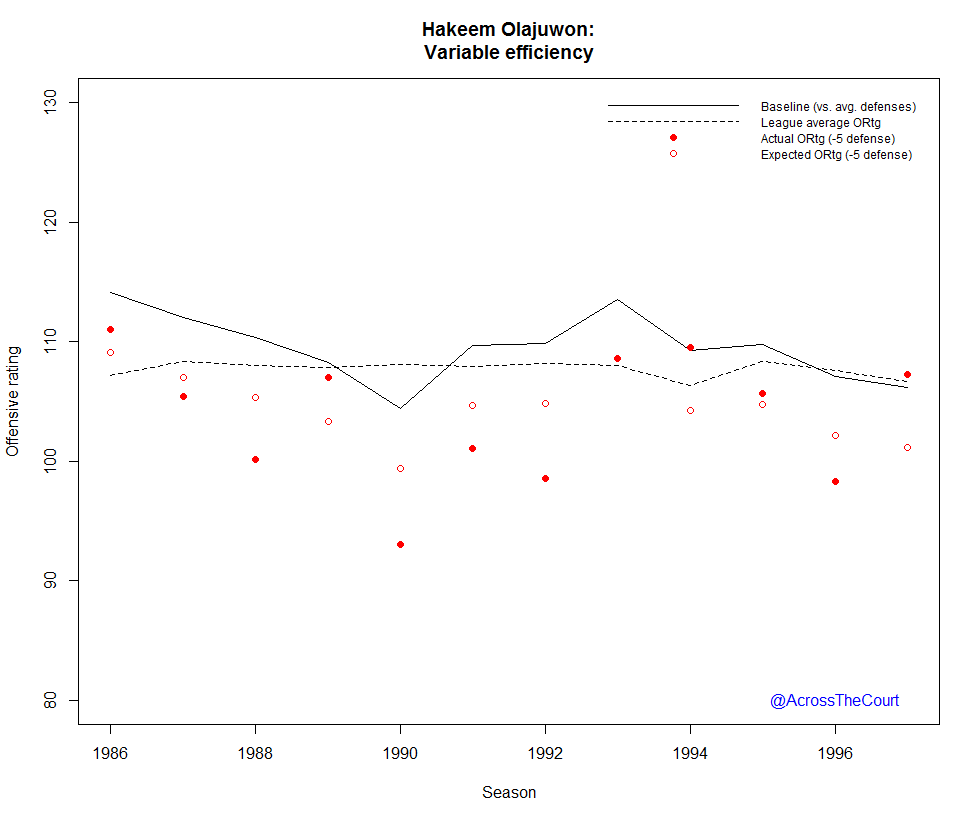
Of course, focusing on only efficiency misses a lot of detail, like how much defensive attention a player gets or the relationship between usage and efficiency, and it’s entirely missing the defensive end. Bringing it back to points, Olajuwon and Ewing are on equal footing thanks for Ewing’s increased usage, and Robinson, whose average is almost exactly the same as Olajuwon’s and Ewing’s over the time-span, loses over a point compared to them. Shaq’s in a league of his own in terms of scoring, but he’s not immune.
V-stat: Variable points
Hakeem Olajuwon:
0.22
(31.6 points per 100 poss. versus a -5 rated defense)
Patrick Ewing:
0.21
(31.9 points)
David Robinson
0.47
(30.3 points)
Shaquille O’Neal
0.41
(35.9 points)
We’re still ignoring defense, and we’re pooling all games together, even playoff games, but it’s an enlightening view into the myths surrounding some legends. Often players are judged by a single series or maybe two, like Ewing’s finals in 1994 or Robinson the next year, while this method looks at nearly a thousand game over several games. You can even check the trends year-by-year too. There’s something about David Robinson’s game that may not translate well against elite defense — a face-up game, basic post-up moves, a reliance on transition — yet even a reduced Robinson is exceptional.
A lot of this is noise, the shaky annual results, but in that noise is the history of basketball, the ups and downs and outrageous games. We can look at the numbers and see a smaller gap, or an nonexistent one, between Ewing and Olajuwon in scoring than history remembers, but the numbers are blind to this prejudice.
A player’s averages on the season can be deceiving if those numbers are piled high against lesser competition, but this effect is probably overstated in most cases. A variable stat with respect to the strength of the opposing team analyzes just that.




















